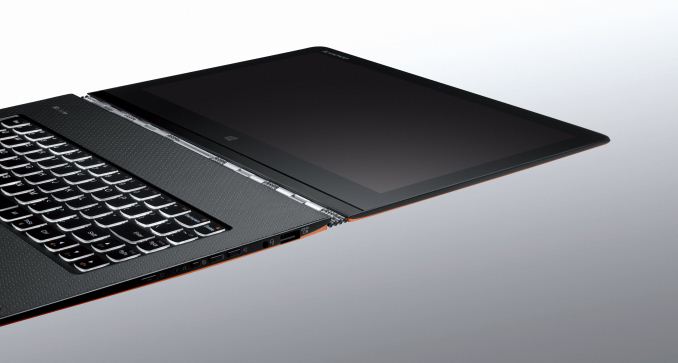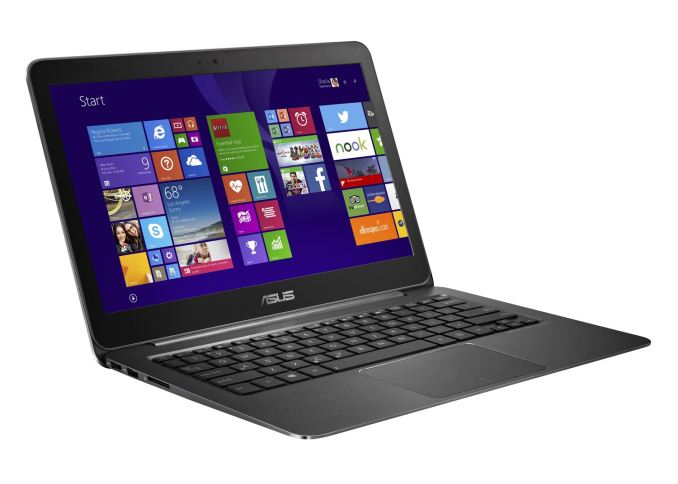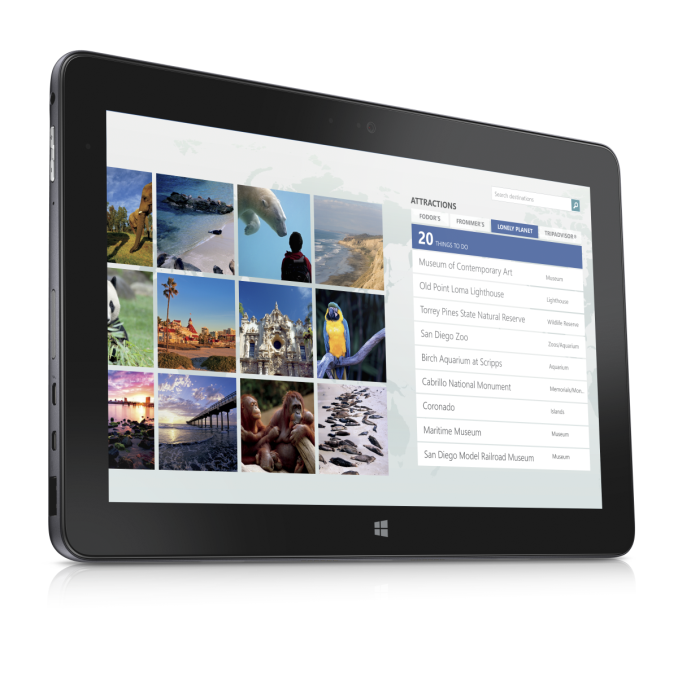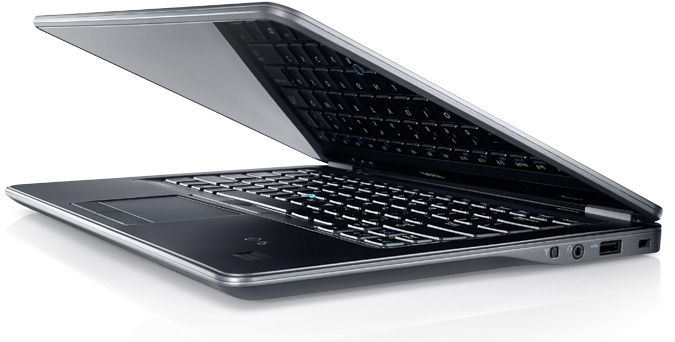Analyzing Intel Core M Performance: How 5Y10 can beat 5Y71 & the OEMs' Dilemma
by Brett Howse & Ian Cutress on April 8, 2015 8:00 AM ESTThe Devices and Test
For today's article we have run a sampling of devices through several benchmarks which vary in workload substantially. Some are single-threaded and some are multi-threaded - some emphasize burst performance, and some focus on sustained performance. Some involve the GPU and some do not. During all of the benchmarks, CPU frequencies, GPU frequencies, and processor temperature were logged. The devices are all different as well, and offer different takes on Core M.
The first device is the Lenovo Yoga 3 Pro. This is the same device that we reviewed, and it features a Core M-5Y71 processor which is the very top of the Core M range. Lenovo has chosen to include a fan, so this is the only one of the Core M devices being included that is actively cooled. Being a convertible laptop, Lenovo must be more wary of surface temperatures than a traditional laptop since the Yoga 3 Pro can be used in the hand as a tablet.
The second device is the ASUS Zenbook UX305, which was recently reviewed as well. This features a Core M-5Y10 processor, which is the lowest-end model available. The UX305 is passively cooled and features an entirely aluminum chassis, which helps to dissipate the heat generated. As a laptop, higher surface temperatures can be manageable since the device is normally sitting on the raised feet and not in direct contact with skin.
The third device is the Dell Venue 11 Pro 7000, which also features the top end Core M-5Y71. This is a tablet first and foremost, and is also passively cooled. The Venue features a plastic rear casing, and as a tablet surface temperatures must be taken into consideration.
The final device is the Dell Latitude 14 7000, which is powered by the Core i5-5200U processor. Being a much higher TDP part, but largely the same architecture, will give a reference point on what Broadwell will do when given better cooling. The sample received has only one channel of memory, which will mostly affect the GPU scores. Dell does offer dual-channel memory, so this device can perform higher than the sample that we have.
Overall the Core i5-5200U is much less dynamic than Core M, with a base CPU frequency of 2.2 GHz and boost of 2.7 GHz. If you will notice, the boost is actually less than the Core M-5Y71, so assuming adequate cooling, or short enough workloads, Core M could in theory outperform the i5, which is something we did see on some benchmarks in the Yoga 3 Pro review.
The average computing day for anyone is going to be wildly different depending on what tasks they are performing. A lot of tasks however are very much burst workloads. As an example, browsing the web means loading the page, which is mostly done upfront. These kinds of workloads will play well into what Core M can do. Boost up to the maximum frequency, get the work done, and then fall back down to the base frequency and cool off. This is the epitome of Intel's hurry up and get idle philosophy.
However not every workload is like this. Gaming for example is a lot of consistent work, done over a long period of time, so cooling is the key here to keep performance up.
To sample a wide variety of workloads, I have picked a variety of benchmarks which are both short and long, do burst work or sustained work, and some involve the GPU and others do not.
Cinebench R15 Single-Threaded: This benchmark performs rendering on a single CPU core, so it should showcase higher clock speeds and good single-threaded performance. The benchmark lasts roughly ten minutes.
Cinebench R15 Multi-Threaded: The same benchmark, but the work is performed on all available cores, including hyper-threading. This benchmark is roughly three minutes.
PCMark 8 Home and Creative: Both the Home and Creative suites of PCMark 8 feature a variety of workloads. Home includes workloads for web browsing, writing, gaming, photo editing, and video chat. Creative includes web browsing, photo editing, video editing, group video chat, media transcoding, and gaming workloads. Home is around thirty minutes, and Creative takes about an hour to complete.
TouchXPRT 2014: This benchmark performs beautify photos (add filters, HDR, etc), blend photos, convert videos for sharing, create music podcast, and create slideshow from photos. Each task is timed, and a lower time results in a higher score. This benchmark takes about ten minutes to finish.
3DMark Sky Diver and Cloud Gate: 3DMark is a staple of our reviews. Both run through several graphics and physics tests which work both the CPU and GPU. Sky Diver is the more difficult of the tests. Sky Diver is about five minutes, and Cloud Gate is about three minutes.
3DMark Ice Storm Unlimited: This test is completely off-screen, and allows for comparison of the graphics across devices and even platforms. Being that it is available for smartphones and tablets, it is a much lower demand on the GPU, and completes very quickly on a PC with the entire benchmark being complete in about a minute.
DOTA 2: This incredibly popular online multiplayer battle-arena game is our final benchmark. This is the same workload performed for the DOTA 2 benchmark we have for reviews, only we run it for the full length of the recording. The entire run is around 45 minutes.
The following pages are very graph heavy, with some of the graphs being quite wide to show the sustained performance of the device over the benchmark run. Below is a gallery of all of the images, in order, which can be references as larger images in a separate window.
A note about the graphs. Each benchmark will show an entire run on each device, and then some combined graphs with the individual scores compared against the other devices. Due to the sampling rate, it may appear that some devices finished the benchmark before the others, but this is not always the case. Several of the devices were too loaded to always log to the text file, so they may have less entries, and appear to get the work done quicker if just comparing based on the time scale. The important data on the combined graphs is how each device handles the entire workload versus the others. We have also included the scores from each device to see where they finish the benchmark.




















110 Comments
View All Comments
wintermute000 - Friday, April 10, 2015 - link
I actually want to see comparisons with desktops (esp older ones like Sandy era)ToTTenTranz - Wednesday, April 8, 2015 - link
Is there a review of the Dell Venue Pro 7000 coming up?In Europe, that tablet is priced similarly to the non-Pro Surface 3, so it would be interesting to make a comparison between a Core M and a Cherry Trail X7 device in a similar form factor regarding performance and battery life.
Brett Howse - Wednesday, April 8, 2015 - link
Yes.Daishi83 - Wednesday, April 8, 2015 - link
How about the T300 Chi? Preferably with FHD displayBrett Howse - Wednesday, April 8, 2015 - link
I'm but one man, but it is on my radar.kyuu - Wednesday, April 8, 2015 - link
It seems to me that the issue with the Yoga isn't poor cooling per se, but the inexplicable decision to have a target CPU temp of 65 degrees under load. If they allowed it to go up to 90 as the other devices do, it would almost certainly be the best performer.dusk007 - Thursday, April 9, 2015 - link
I would prefer it the way it is. Maybe it would be good if the user could decide by switching power plans. Not sure how it works.But generally I would not do much work that requires sustained performance on such a hybrid yoga. It is good for bursty workloads and stays cool even on high load flash website like a twitch high resolution stream (which heats my 15" MBP quite a bit). If it gets the work done while being cool to touch it is better. If you put it on a table it can be quite hot as long as the keyboard is reasonably cool. But pick it up and use it actually on your lap in normal or tablet mode, that 65C temp limit is a godsend.
It theory that should be in the windows power plan so one can just switch it to something else when performance means more than cool operation. I think in such a notebook performance should take a back seat.
vegemeister - Friday, April 10, 2015 - link
Increasing the max temperature wouldn't make it run any hotter unless you actually needed the performance.tsk2k - Wednesday, April 8, 2015 - link
Good read. I'm curious to see whether skylake core M improves much over this when it launches later this year.Crunchy005 - Wednesday, April 8, 2015 - link
Performance gains between archs in the same TDP...I feel between 1-5%? Haven't seen any huge performance gains in a long time just minor improvements.